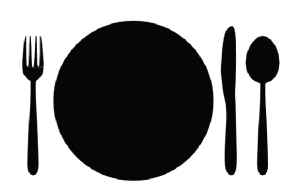Portions for Preschoolers
 Your child is a ball of energy! Do you ever wonder if they are getting enough or too
much to eat? Help your child get enough of the foods they need by providing meals
and snacks at the same time every day. Offer foods from each of the five food groups
in the amount right for them. The five food groups are: grains, vegetables, fruits,
dairy and protein. Whole grains, fruits and vegetables provide fiber good for your
child’s health and helps your child feel full. Dairy and protein also are good for
your child’s health and help them grow strong.
Your child is a ball of energy! Do you ever wonder if they are getting enough or too
much to eat? Help your child get enough of the foods they need by providing meals
and snacks at the same time every day. Offer foods from each of the five food groups
in the amount right for them. The five food groups are: grains, vegetables, fruits,
dairy and protein. Whole grains, fruits and vegetables provide fiber good for your
child’s health and helps your child feel full. Dairy and protein also are good for
your child’s health and help them grow strong.
How much does my child need?
The following chart is how much of each food group your 3- to 4-year-old needs in a day. The total amount should be divided into smaller amounts and served in meals and snacks during the day.
- Grains 4 to 5 ounces (about four to five servings)

- Vegetables: 1½ cups (about five to six servings)
- Fruits: 1 to 1½ cups (about five to six servings)
- Milk & Dairy: 2 to 2 ½ cups (about four servings)
- Protein Foods: 2 to 4 ounces (about two servings)
What is a child size serving?
Keep in mind that your child’s stomach is about the size of their fist. It does not hold a lot of food at one time.
To help your child eat the amount of food right for him or her, use the following guides for child size servings.
- A serving of bread is about ½ slice.
- A serving of fruit, vegetables or beans is about 1 tablespoon for each year of his or her age.
Parent provides, child decides
Your child may not eat a whole serving at one time. That is okay. A half serving may
be  enough for their small stomach. Each child’s needs are different. Also, your child’s
appetite may change from day to day. For these reasons, it is better not to force
your child to eat or keep your hungry child from eating. The parent’s job is to provide
meals and snacks at the same time every day. Offer child-sized servings of healthful
foods from the five food groups. Then trust your child to eat the amount that is right
for him or her.
enough for their small stomach. Each child’s needs are different. Also, your child’s
appetite may change from day to day. For these reasons, it is better not to force
your child to eat or keep your hungry child from eating. The parent’s job is to provide
meals and snacks at the same time every day. Offer child-sized servings of healthful
foods from the five food groups. Then trust your child to eat the amount that is right
for him or her.
Reviewed by: Jenni Kinsey, MS, RD, LD & Hasina Rakotomanana, MS.
References:
USDA. (2018). How much does my preschooler need? Retrieved from: https://www.choosemyplate.gov/how-much-does-my-preschooler-need
Deana Hildebrand
PhD., RD,LD, Associate Professor & Extension Specialist
Christine Walters
RDN, LD, MS, Extension Program Assistant
Oklahoma Cooperative Extension Service
Nutritional Sciences Department, Oklahoma State University
